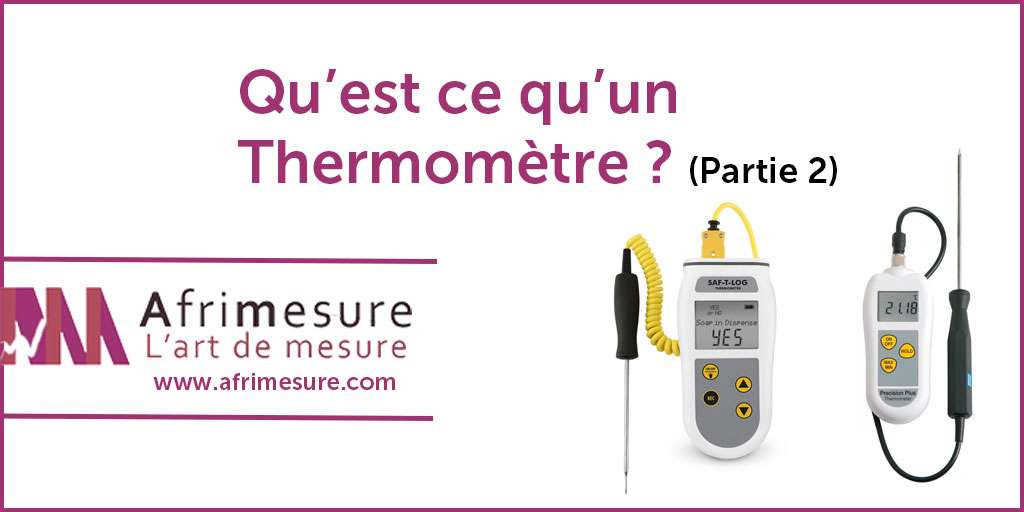Thermistors.
These thermometers are part of a large family of temperature-measuring instruments known as resistive temperature devices (RTDs).
The materials that make up these devices respond to temperature variations by exhibiting variations in electrical resistance. Two main types are metallic devices, commonly referred to as probes and thermistors. As the name suggests, an RTD relies on the change in resistance in a metal, with resistance rising more or less linearly with temperature. The word "thermistor" is a contraction of "heat-sensitive resistor."
- Definition:A thermistor is a temperature-sensing element made of a sintered, semi-conductive material that exhibits a large change in resistance proportional to a small change in temperature.
- Principle:Most of the thermistors we use have negative temperature coefficients; resistance falls non-linearly with increasing temperature. On the whole, thermistors are more stable than thermocouples, but their temperature range is not as wide, nor is their response time as fast. The more restrictive temperature range of thermistors is typically between -25 and 150°C, making them poor candidates for measuring temperatures in cooking appliances such as ovens, fryers and hob tops. At these extreme temperatures, thermistors will lose considerable accuracy. However, thermistors offer high accuracy in the control temperature range and are therefore ideal for use as compliance tools.
- Application:With its slim probe, the thermistor is particularly well suited to the internal temperature of a cooked hamburger patty. The thermistors we use regularly are small and lightweight, and fit easily into a shirt pocket. As a rule of thumb, a replaceable 1.5-volt photoelectric battery provides enough power for an average running time of one year. Because the sensor tip is a potted ceramic bead in a high thermal conductivity epoxy, the thermistor probe must be immersed about half an inch in the food to compensate for the thermal conductivity on the stem. In addition, probes, controls and readout are all in one unit. This can hamper flexibility in taking temperature readings, and because of their small size, it can be difficult to read the temperature in the L window
- Technical point of view:Thermistors are indeed resistive devices, and therefore work by passing a current through a sensor. Even if a very small current is used, it creates a certain amount of heat which can get rid of the temperature measurement under certain conditions, particularly in fluids which are not agitated.this problem does not arise with thermocouples, which are essentially zero-current devices. The most significant drawback of many portable electronic thermometers, especially those requiring two-handed operation, is their appalling sanitary design. Electronic thermometers sold to the food industry have probes whose geometry is no better than that of a dial thermometer, yet they are marketed as suitable for monitoring the internal temperature of a cooked hamburger patty.All electronic devices, displays and colored plastic exteriors can't make up for poor design. For this reason, we'd like to see thermometer manufacturers and importers, as well as users and regulators establish an ANSI standard that includes specifications not only for safe food-contact materials, but that address instrument performance, sanitary design and a proscribed format for manual instruction. In short, we need to adopt standards for, portable thermocouple and thermistor units where we are assured of their accuracy, safety, usability and ease of cleaning. We need to specify how these units are either calibrated or validated, and above all, we clearly need written instructions on how these units are used in quality control and regulatory compliance.
